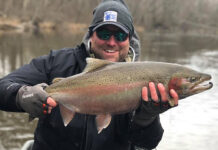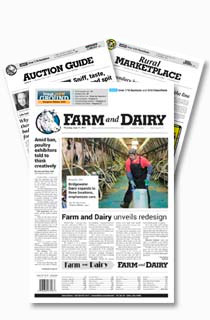I don’t know who gets the credit for popularizing the beef-on-dairy trend, but this practice has significantly enhanced the marketability of these calves. Producers have wisely determined that breeding a portion of the herd to beef bulls creates a consistent profit center.
Advances in genomic prediction technology have made this a targeted management strategy and not solely a decision based on a last-ditch effort to get her bred. Another income stream that could benefit from strategic planning is the management of your cull cows.
There are a lot of reasons that a cow can be asked to leave the herd. I already alluded to issues with getting them bred, but we can also include limited free-stall space, poor production, lameness, disposition, injury and “she looked at you the wrong way.”
While the decision to add her number to the cull list was definitive, there may be a benefit to not putting her on the truck in time for the next sale.
Body condition
The price producers see at the stock sale are dependent on two main factors: body condition score and mobility/health. We will come back to the mobility/health issue in a minute, but I want to address body condition first. The U.S. Department of Agriculture grades culls into breakers, boners, leans and lights.
Using the beef cattle body condition scoring system of 1 to 9 (1 being emaciated and 9 morbidly obese) we would classify breakers as a BCS 7 or greater, boners as a 5 to 7, Leans a 1 to 4 and lights being those small-framed cows with low carcass weight.
The marketing “sweet spot” is for those cows that grade out into the boner category. These are the cows that have a BCS of 5 to 7 or a 3 to 4 using the dairy scoring system. If we use the most recent USDA National Weekly Direct Cow and Bull Report, there is potentially a $8 per hundredweight premium for this grade.
Most of the reasons you would choose to cull a cow will also result in her being on the thin side. For these cows, there can be a benefit to keeping them around on a high-energy diet to increase body condition scores prior to marketing.
On average, there is about 120 pounds of body weight between body condition scores. Producers need to determine if the higher sale price potential is worth keeping these cows around for another 50 to 75 days. You will need to know your feed costs well as having the space to hold them.
The other benefit will be to dry them off when you pull them out of the milking string. Drying them off will dramatically lower their feed requirements and help them put on weight a little faster. It will also help in the eyes of the buyer and our consumers.
Cows with a full udder are slightly discounted due to the buyer not wanting to pay for the extra weight. There is also the welfare component that these cows will be stressed from the milk production between the time of last milking and their arrival at the harvest floor.
Compromised welfare
While drying these culls off and placing them on feed to increase body condition score will potentially make these cows more marketable, several of the other conditions that would result in her being a cull may require a different outcome than hauling her to the stockyards. The stockyard is not the answer for every problem cow. There are some cows that need to be humanely euthanized on farm when their welfare is compromised.
The National Cattlemen’s Beef Association (NCBA.org) has created a cull cow management guide called “Right Way. Right Time.” No one likes to euthanize a cow. This can be traumatic for farm personnel, but it is often the right choice in terms of animal welfare.
The guide highlights euthanasia is the correct decision when a cow has the following issues: fractures in the leg, hip or spine that result in immobility or ability to stand; emergency medical concerns that can’t be relieved by treatment; animals too weak to be transported due to illness or injury; animals that have paralysis from a traumatic injury or disease, and animals that have diseases with no effective treatment that can be a significant threat to human health
In conclusion, producers can benefit from viewing culling as a marketing strategy and not just disposing of a problem. You need to know your feeding costs and the market potential in your area before making the decision to keep these cows on feed to increase body condition scores. We also need to keep consumer concerns in mind and only be marketing those cows that are fit for transport before loading them up for the next sale.













